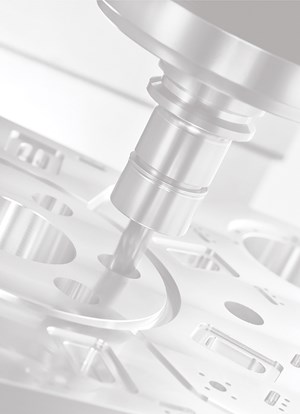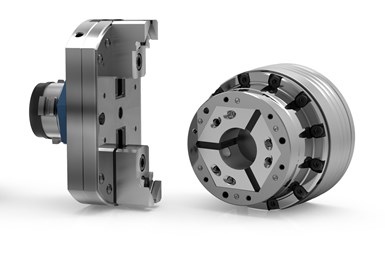Hainbuch Two-Jaw Module Clamps Cubic Parts
Hainbuch’s modular workholding system now includes a two-jaw module that can clamp cubic parts positioned centrically on machining centers and milling machines.
Share



For users who work with a wide range of part diameters and configurations, as well as small quantities, the ideal setup is to have maximum flexibility. Hainbuch’s modular system is designed to handle round, prismatic, small and large components by allowing virtually any workholding configuration. Hainbuch’s designers and engineers in Germany are working to expand the modular system, and the company has now released a two-jaw module for clamping cubic parts.
The two-jaw module can clamp cubic parts that are positioned centrically on machining centers and milling machines. Users can change-over from clamping round parts to cubic ones in less than two minutes, according to the company. The module can also handle turning applications ranging to 1,500 rpm. Its compact profile makes it a good alternative to large, heavy centric vises.
The two- and three-jaw modules use the company’s collet chuck as their base. The Centrex quick-change interface enables users to perform change-overs without removing the collet chuck and realigning.
Because the modular system is smaller than many vises, it is less likely to interfere with machining. Applications may no longer require special, longer tools, and the risk of collision is reduced.
Related Content
-
Royal Products Introduces Versatile Three-Jaw Chuck
IMTS 2024: Royal Products features a Three-Jaw Chuck for CNC workholding, designed to reduce setup time between jobs and for the utilization of a range of top tooling.
-
Custom Workholding Shaves Days From Medical Part Setup Times
Custom workholding enabled Resolve Surgical Technologies to place all sizes of one trauma part onto a single machine — and cut days from the setup times.
-
Revolutionizing Production: How Smart Hydraulics Drive 24/7 Manufacturing Excellence
All World Machinery Supply helps a firearms manufacturer up its game and improve and increase output.




















